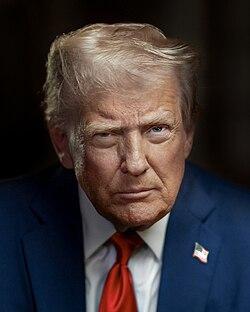Donald Trump’s vision of a fortified American economy, built on aggressive protectionism and trade barriers, is beginning to reveal unintended consequences that may undermine the nation’s long-term prosperity. Once hailed by supporters as a bold strategy to revive domestic industries and secure jobs, this “fortress economy” approach is increasingly coming under scrutiny. As global supply chains falter and inflationary pressures rise, The Economist examines how the economic walls erected during the Trump administration are starting to strain relationships with trading partners, disrupt markets, and weigh on American consumers and businesses alike.
Donald Trump’s Economic Isolationism Undermines Global Trade Partnerships
Under the recent wave of protectionist policies, America’s global leadership in trade hits an unprecedented snag. By imposing stringent tariffs and renegotiating agreements with key allies, the administration aims to prioritize domestic industries but risks alienating long-standing partners. The immediate effect has been a contraction in export volumes, disruptions in supply chains, and retaliatory tariffs that ultimately burden American consumers and manufacturers alike.
Key repercussions of this approach include:
- Decreased access to international markets for U.S. businesses
- Escalating trade tensions with multiple economic blocs
- Reduced foreign direct investment inflows
- Shift in global supply chains away from the U.S.
| Trade Metric | 2016 | 2023 | Change |
|---|---|---|---|
| U.S. Exports ($B) | 1,460 | 1,320 | -9.6% |
| FDI Inflows ($B) | 275 | 190 | -30.9% |
| Tariff Average (%) | 1.6 | 6.8 | +325% |
Rising Tariffs and Supply Chain Disruptions Threaten American Manufacturing
American manufacturers are increasingly feeling the strain as escalating tariffs disrupt established trade relationships and inflate costs. What was once a competitive advantage-encouraging domestic production through protective measures-has now morphed into a series of unintended consequences. Companies face higher input prices, forcing some to pass costs onto consumers or seek alternative supply sources abroad, undermining the very goal of reshoring industries.
Compounding the picture are ongoing supply chain disruptions, which expose cracks in the nation’s industrial backbone. Delays, container shortages, and bottlenecks have become the new normal, throwing off production schedules and jeopardizing timely deliveries. Below is a snapshot of key tariff impacts on select manufacturing sectors:
| Sector | Tariff Increase (%) | Estimated Cost Impact ($ billions) | Production Delay (weeks) |
|---|---|---|---|
| Automotive | 25% | 12.5 | 4 |
| Electronics | 15% | 8.1 | 3 |
| Steel & Metal | 35% | 5.4 | 2 |
| Textiles | 20% | 2.8 | 5 |
- Price volatility has destabilized project budgeting and long-term contracts.
- Manufacturers are forced to reevaluate suppliers, often incurring increased logistics expenses.
- Smaller businesses especially struggle to absorb tariff-induced shocks compared to industry giants.
Recommending Strategic Engagement and Multilateral Cooperation to Restore Growth
In an increasingly interconnected global economy, the risks of isolationist policies are evident as America faces a slowdown exacerbated by restrictive trade measures and tariffs. To reverse this trend, policymakers must prioritize strategic engagement with key allies and foster a spirit of multilateral cooperation. Such an approach can reignite innovation, diversify supply chains, and rebuild confidence among international partners. It is no longer sufficient to rely solely on unilateral economic fortifications; integrated partnerships are vital to unlocking growth potential in sectors ranging from technology to manufacturing.
Implementing a framework that encourages collaboration on trade, technology standards, and climate policy can yield tangible benefits. Consider these critical pillars for restoring momentum:
- Revitalizing Trade Agreements: Modernize existing pacts to reflect 21st-century challenges and opportunities.
- Joint Technological Innovation: Promote shared research initiatives to maintain global competitiveness.
- Climate Cooperation: Align strategies to address environmental risks while fostering green growth.
| Engagement Area | Potential Benefit | Example Partners |
|---|---|---|
| Trade Agreements | Expanded market access, reduced tariffs | EU, Canada, Japan |
| Tech Innovation | Shared R&D, faster product development | South Korea, Germany, Israel |
| Insights and Conclusions
As the repercussions of Donald Trump’s economic policies continue to unfold, it becomes increasingly clear that his “fortress economy” approach may be exacting a heavier toll on America than initially anticipated. Heightened trade barriers, strained alliances, and rising domestic costs threaten to undermine long-term growth and global competitiveness. The challenges ahead underscore the complexity of balancing protectionism with openness in an interconnected world-a delicate task that future policymakers must navigate carefully to restore economic stability and international trust. |
